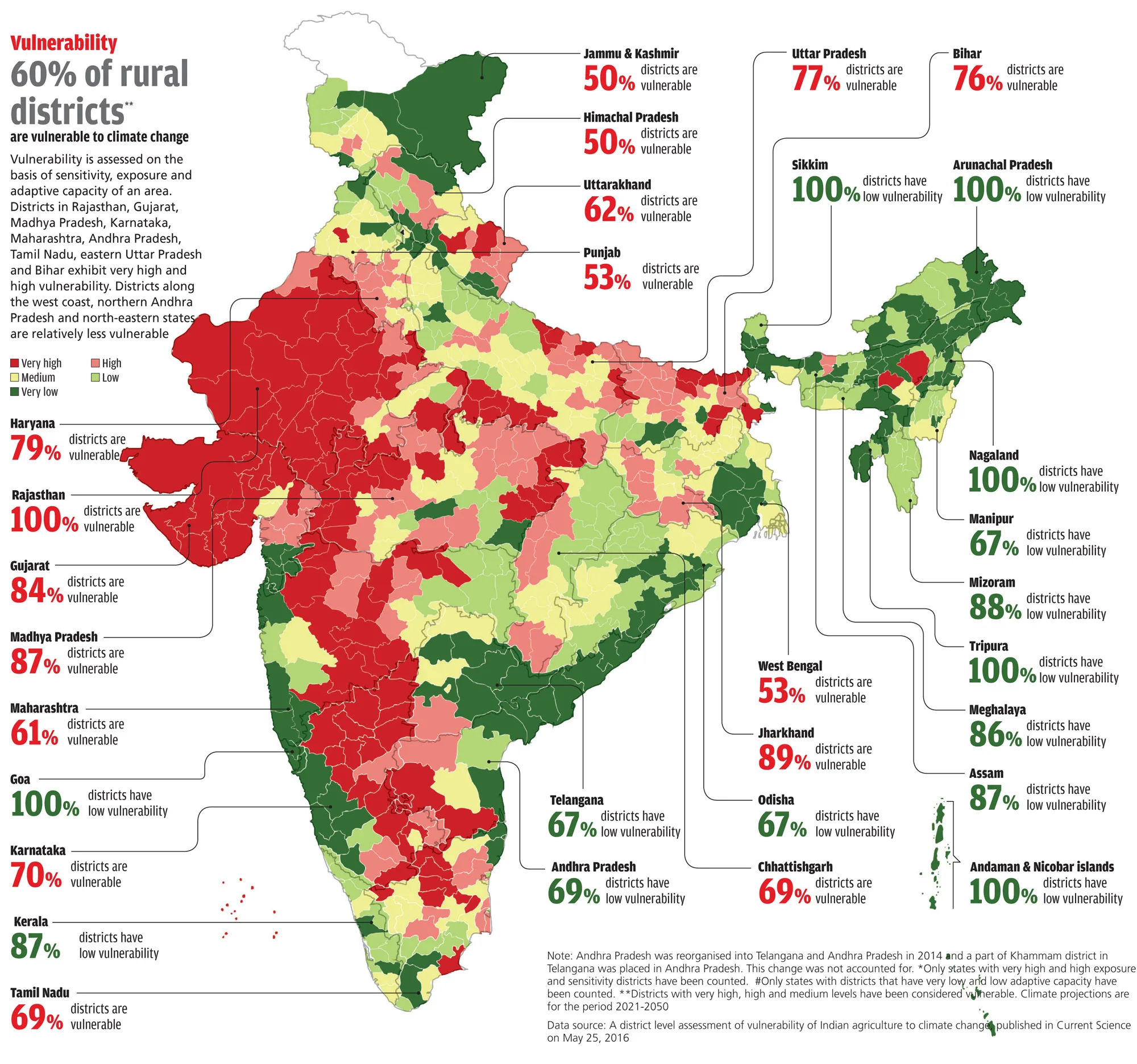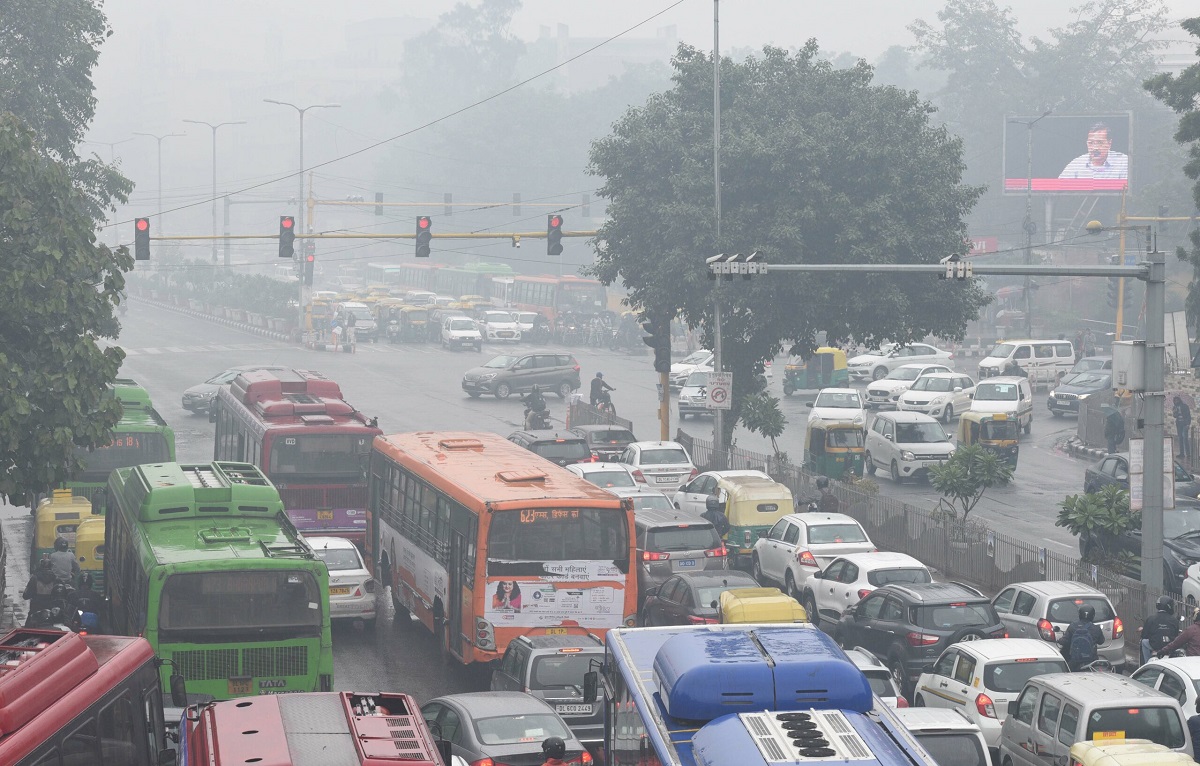The Ministry of Earth Sciences (MoES) in 2020 published the ‘Assessment of Climate Change over the Indian Region,’ providing a comprehensive analysis of climate change‘s impact on the Indian subcontinent. The key findings from the report are as follows:
- Between 1901 and 2018, India’s average temperature increased by approximately 0.7 degrees Celsius.
- The frequency of daily extreme precipitation events (rainfall intensities exceeding 150 mm per day) rose by about 75% from 1950 to 2015.
- The occurrence and spatial extent of droughts in India significantly increased during the period from 1951 to 2015.
- Over the last 25 years (1993-2017), the sea level in the North Indian Ocean rose at a rate of 3.3 mm per year.
- The Arabian Sea experienced a rise in the frequency of Severe Cyclonic Storms during the post-monsoon seasons from 1998 to 2018.
The India Meteorological Department (IMD) continually monitors the climate in the Indian region and issues regular publications such as the “Annual Climate Summary,” providing information on temperature, rainfall, and extreme weather events for the respective periods. Additionally, IMD releases monthly climate summaries to keep track of ongoing climate patterns.
Efforts by Indian Government to Tackle Climate Change:
The Indian government has been actively involved in efforts to tackle the effects of climate change and promote sustainability. Some of the key initiatives and measures taken by the Indian government include:
- National Action Plan on Climate Change (NAPCC): The Indian government launched the NAPCC in 2008, outlining eight national missions that focus on various aspects of climate change mitigation and adaptation. These missions include promoting solar energy, enhancing energy efficiency, sustainable agriculture, water conservation, and creating a Green India.
- International Solar Alliance (ISA): India, in partnership with France, established the ISA in 2015. The alliance aims to promote solar energy deployment globally and drive affordable and sustainable energy solutions for all.
- Renewable Energy Promotion: The Indian government has set ambitious targets for renewable energy capacity installation, including solar, wind, and hydroelectric power. Various incentives and policies have been introduced to encourage private investment in renewable energy projects.
- National Clean Air Programme (NCAP): Launched in 2019, the NCAP aims to combat air pollution and improve air quality in 102 cities across India. The program focuses on reducing particulate matter and other harmful pollutants.
- Smart Cities Mission: The Smart Cities Mission aims to develop sustainable and climate-resilient cities by integrating technology, infrastructure, and public services for efficient urban living.
- Afforestation and Reforestation: The government has initiated large-scale afforestation and reforestation programs to increase the country’s forest cover and sequester carbon dioxide from the atmosphere.
- Climate Resilient Agriculture: Various schemes and initiatives have been introduced to promote climate-resilient agriculture practices, enhance water efficiency, and ensure food security in the face of changing climate patterns.
- International Commitments: India has committed to the Paris Agreement and pledged to reduce its carbon intensity and increase its renewable energy capacity significantly by 2030.
- Energy Efficiency Programs: The government has launched energy conservation programs and introduced energy-efficient appliances and building codes to reduce greenhouse gas emissions.
- Green Transportation Initiatives: The government is promoting electric vehicles and investing in public transportation infrastructure to reduce reliance on fossil fuels and mitigate air pollution.
These efforts demonstrate India’s commitment to addressing climate change challenges and transitioning towards a greener, more sustainable future. However, ongoing efforts and international cooperation are crucial to effectively tackle the impacts of climate change on the Indian subcontinent and beyond.



